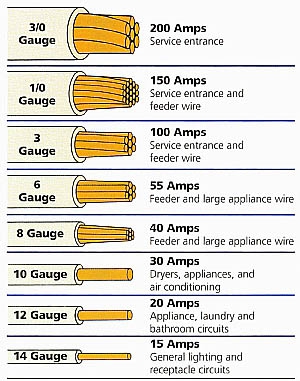|
What section of the good book goes over sub-panel placement rules/requirements (physically installing)?
|
|
|
|

|
| # ? May 10, 2024 01:08 |
|
kid sinister posted:With that many tags on the cables, you should be OK. Anything that well documented is a branch point for subscribers like phone or cable, and those all use low voltage. Here's a few more pics-      devicenull posted:That looks like it's coax, right? Do you live in a condo or something? If so, call your cable company and get them to come out and fix it. Those connections are usually outside anyway, so it's not terribly hard to fix. I wouldn't suggest you start disconnecting stuff to rearrange it. Yeah, I live in a condo- this is outside near my back porch. It's the junction box for all the coax cables. I assume it's the main junction point for a number of different units. I'm not touching any of the wires or connections on the inside- I just want to know if I should be concerned about the wires being openly exposed like that. I wedged the cover over the front, but it's not permanently fixed.
|
|
|
|
Vinny the Shark posted:I'm not touching any of the wires or connections on the inside- I just want to know if I should be concerned about the wires being openly exposed like that. I wedged the cover over the front, but it's not permanently fixed. It's only going to make peoples internet and tv slower/crappier if water gets in to the box. Call your cable company and tell them it looks like the box has been tampered with and could someone come fix it. Good luck trying to explain it to the T1 person on the phone.
|
|
|
|
H110Hawk posted:It's only going to make peoples internet and tv slower/crappier if water gets in to the box. Call your cable company and tell them it looks like the box has been tampered with and could someone come fix it. Good luck trying to explain it to the T1 person on the phone. Yea, there is no safety issue there. You'd probably have a lot more luck telling the person on the phone there's a line down. That would hopefully get you to the right department.
|
|
|
|
devicenull posted:Yea, there is no safety issue there. You'd probably have a lot more luck telling the person on the phone there's a line down. That would hopefully get you to the right department. nah, say it looks like someone is stealing cable
|
|
|
|
Tell them someone is stealing cable from a downed line that was tampered with. And that your internet is slow.
|
|
|
|
|
What's going to be the easiest way to figure wtf is up with a couple mystery switches I have in my house? They don't appear to switch anything, I've checked outlets in the vicinity, nothing, and their possible application is non-obvious based on location. I have a suspicion they were abandoned, although probably not formally and correctly, and I'd like to just figure out where the wires go in case I'd like to resurrect the circuit. So I guess I'm looking for a relatively easy way to trace the wire in the walls without opening up said walls.
|
|
|
|
|
Bad Munki posted:What's going to be the easiest way to figure wtf is up with a couple mystery switches I have in my house? They don't appear to switch anything, I've checked outlets in the vicinity, nothing, and their possible application is non-obvious based on location. I have a suspicion they were abandoned, although probably not formally and correctly, and I'd like to just figure out where the wires go in case I'd like to resurrect the circuit. Step 1 is to pull them out and see if there is even any input power. You might find the black wire just wire-nutted across or 0 volts. If it's the former, undo the nut and see what turned off.
|
|
|
100% certain there is power to the switch. Was reaching my probe in to test exactly that and accidentally bridged from the switch's terminal to ground, blew out the tip of my probe and left a nice spot in my vision. Didn't trip the breaker, though, I guess the fuse capacity of my probe tip is less than the 15A breaker on that circuit.  I do have one of those little non-contact voltage testers, I suppose I could disconnect all the other circuits inside that box, turn the switch on, and see if I can find the wire through the wall that way, but that sounds a little silly and prone to not really helping since the wire leaving that mystery switch might run adjacent to other still-hot wires. Bad Munki fucked around with this message at 20:06 on Jan 27, 2017 |
|
|
|
|
I suspect your non-contact voltage sensor isn't sensitive enough to detect through drywall anyway. At least with mine I have to get pretty close to a live outlet before it'll pick up anything.
|
|
|
|
Had it at a friend's house and it was picking up a single 14/2 line to an outlet from about 12" away through 1/2" drywall. I can follow the existing bundle out of the box in question here from about 4" off the wall. Not sure what the difference between here and there is, although that house is several decades older than this one, and I suspect I'm tracing a bundle of wires here instead of just one. Who knows.
|
|
|
|
|
When I bought my house, it had a breaker and an outlet for an air compressor in the garage. So I finally picked up an air compressor. However, I'm not sure the existing wiring is correct or good enough. The existing breaker is a 15amp and takes up 2 slots. I don't know enough to say what phase it is. Here's a picture of the breaker:   The wiring as you can see goes into some normal looking (to me, at least) romex to the outlet. {Edit: A bit of googling implies this is 20A romex, so I'd need to change the wire if I went up to a 30A circuit} {Edit Again: I took a closer look at the wiring. It's Type NM-B 600V 12/2, which looking up, is indeed 20A}  The current outlet looks like this on the outside:  And this on the inside:   The manual states that I need to have a 230v single-phase 30-40 amp circuit, which is obviously significantly higher than the breaker. I looked at the motor, and it says 15 amps. Here's a picture of that.  So - couple questions: 1.) Can I get this to work myself or should I be calling an electrician off the bat? 2.) Will a 15a breaker be fine? Or should I replace it (and maybe the wiring, see below) with a 30a breaker? 3.) Will the existing wiring be fine? 4.) Is the existing outlet sufficient? I'm not afraid of doing some wiring, but I also don't know anything when it comes to 230v single-phase. I also need to wire a power cord up to the outlet from the compressor, but based on my understanding of single-phase as well as the schematic for the motor, it'd be hard to gently caress that up as long as I have the right kind of plug. Correct me if I'm wrong on that, please. Edit: better angles on the existing outlet since it's not as awful as it kind of looks in the angle I had, just cobwebby:   Yet Another Edit: This will see minimal-moderate usage, for what it's worth. Occasionally popping a breaker isn't a huge hassle, as long as it's not dangerous. My carpet cleaner does that all the drat time and that's probably more annoying. Yet A Final (hopefully) Edit: Looking closer at the manual, where it lists 30-40A is a generic. The required amperage for my particular compressor is "MUST be connected to a 230 Volt, single-phase outlet having operating capacity of 20 amp" which makes more sense with the motor calling for 15A. I'm starting to think that as long as the phase is right, it'll probably be OK as it is? ssb fucked around with this message at 00:28 on Jan 28, 2017 |
|
|
|
shortspecialbus posted:
1.) You should be able to do it yourself. You're looking at unscrewing 6 wires, possibly running new wire (if you see any insulation damage on closer inspection), putting in a new breaker, and possibly replacing the outlet, as I couldn't tell you what its rated for off hand. 2.) No. You need at least a 20 amp breaker. Starting amp draw on the motor will be higher than its running amps. 20 gives you some wiggle room if you have pressure in the tank and the compressor is starting under load. 3.) It should be fine if you only go to a 20 amp breaker. 4.) Tough call, but the outlet isn't going to be a huge cost for peace of mind. You don't know how much use its seen, and its annoying as hell when an old outlet has weakened to the point where it won't even hold a plug in. Edit: My back of the napkin math says the motor can draw up to 16.1 amps on start, so 20 amp would be best. If it draws above 15 amp, you'll trip the breaker every time that you you start the compressor if you don't replace it. zharmad fucked around with this message at 01:22 on Jan 28, 2017 |
|
|
|
Oh my gosh, by serendipity alone, I solved the mystery light switch. This is after being here and wondering about it for like six months. So when I accidentally shorted the switch to ground and blew up the tip of my probe, I immediately noticed that the other switches in that box still worked: porch lights and entryway lights both still worked. I supposed the probe had fused out before the breaker tripped, and just mentally moved on. A few hours later, I'm leaving the house, and when I go to open the garage, the door is real slow and beeping, I decide it must be on battery backup somehow. A quick peek and I notice a breaker labeled "GI" is tripped. Garage Interior, I suppose? So I turn that on, and as I'm leaving, I notice the landscape lighting is plugged into an outlet on the exterior of the garage. I decide that HAS to be it, but when I plug a lamp into that outlet, it doesn't turn on, and the switch in question has no effect. A quick hunt reveals that the exterior outlet is GFCI-protected at an outlet two walls away inside the garage, probably the one protecting all the outlets in the garage. Which, incidentally, was tripped, probably from when I shorted the switch earlier. Reset the GFCI, toggled the switch by the front door, and voila, my test lamp and landscape lighting turn on and off! Mystery solved, and it was all because I cocked up and shorted the switch to ground with my meter probe! Huzzah! It's actually a really satisfying result too, because I've always wanted to be able to put my Christmas lights on an inside witch, and this will provide me exactly that functionality. (The whole thing is a little tricky too, because I had already checked the porch outlets to see if the switch was controlling them, and it's not, just this one outlet, further away down the line of the porch, buried in the bushes.) e: Now to figure out the two (three?) remaining mystery switches in the house living room/kitchen area. Two of them may be three-ways with each other, haven't checked yet.
|
|
|
|
|
H110Hawk posted:Step 1 is to pull them out and see if there is even any input power. You might find the black wire just wire-nutted across or 0 volts. If it's the former, undo the nut and see what turned off. Also, make sure that you test both the top and bottom outlets in that room. Regular duplexes can be split. In rooms that's usually used so that a switch can control one half of the duplex to control lamps while the other half is always on. A good way to spot this is if any of those mystery switches has a red wire attached to it. Yet another explanation for mystery switches is if they're next to other switches that control ceiling fixtures. That switch box is prewired for a ceiling fan so that the two switches can control the fan and lights independently.
|
|
|
|
Yeah, in the initial case, that wasn't the case, as it was a lone switch in the front entryway to the house, no fan or anything there. However, since I figured that one out, I'm all amped up (LOL) to figure out these others. Three switches total. Two of them in a bank of four, the other in a bank of two. The layout is something like this: 4-bank <--------- ROOM -------> 2-bank The 4-gang has unknowns as follows, with the right-most ? being closest to the room: x ? x ? The 2-gang has unknowns as follows, with the ? being furthest from the sliding door to the back yard: ? x Anyhow, the ? from the 2-gang is a 3-way, as is the right-most (closest to the room) ? from the 4-gang. I am sure those MUST be switching the same circuit, wherever it is. The problem is, I'm also 90% sure they're switching a circuit for where there USED to be a light in the living room, where there's a blank on the ceiling...18' up. Too far out from any wall to use an extension ladder, and I don't have a stepladder that tall. Attic is a super royal pain in the rear end to crawl through, I'd be pretty nervous that far up regardless. So right now I'm thinking about trying to tape my non-contact tester to a 15' pole. As for the ? in the 2nd position on the 4-gang bank of switches, hell if I know. Both the known switches in that bank control lights on and about the stairs to the second floor, so it's unlikely that that second switch (checked, it's not a 3-way) was intended for a fan, because then you'd have switches as: light on stairs, fan in living room, light at top of stairs, light in living room. I mean, it's not out of the question, but it'd be extra weird. What I really need is a way to access that blanked out ceiling box without killing myself. e: Here y'know what, it doesn't matter, I don't think there'll be any brilliant insights here beyond what I've already surmised, but just for fun, this is what's up:  e: For $27 I can rent a 14' stepladder from Home Depot, that leaves me reaching just 4' above the top of the ladder, that should put me on the 3rd or 4th rung down...and I'd like to put a light/fan up there, but if I do, the location of that box is all wrong, it's too far off-center, so I'd have to fish wires to the actual location, install a box, etc., and that's pretty far up there, sheesh. But at least I'd know all the wiring is done, that'd be helpful. Bad Munki fucked around with this message at 03:04 on Jan 28, 2017 |
|
|
|
|
zharmad posted:1.) You should be able to do it yourself. You're looking at unscrewing 6 wires, possibly running new wire (if you see any insulation damage on closer inspection), putting in a new breaker, and possibly replacing the outlet, as I couldn't tell you what its rated for off hand. 1.) Cool, that's fine. The existing wiring does not appear frayed or mouse-chewed on any section I can see, at least, and I can see 95% of its run. It's just a little dusty in that outlet box. To confirm, it's safe to use a 20A breaker on 20A wire? 2.) Ok, will replace with 20A. 3.) Cool. 4.) I'll replace it. What style outlet do I want for this? Should it look like the existing kind? As long as you confirm #1 is safe (I think you'd have said something by now if it wasn't, but I really want to triple check this,) I'll hit up the store and pick up a 20A breaker. Is there anything special I need to look for in it - specifically for the Single-Phase (I'm guessing it taking 2 spots will make it 230v (or at least something between 220-240?) Apologies for the dumb questions. I'm vaguely competent with normal wiring - I'm completely lost on 230v. Fake edit: Is there anything special about changing out this breaker besides the usual "shut down the panel before loving with it?" Other edit: Some googling is implying I should actually be getting a 30 amp breaker for this, although the wiring is only rated for 20 amp, because apparently that's how the code says to do it? That seems weird to me but I wanted to ask on it. Supposedly you're supposed to double the amperage for the breaker to cover startup, but the wire you only care about being more than the Full Load Amps * 1.25. Which in this case would work out to being 30 amp breaker and 18.75 amp wire, which I'm good on with 20. This would actually kind of mesh with all the wording in the manual. ssb fucked around with this message at 04:38 on Jan 28, 2017 |
|
|
|
Ok, doing a bit more reading of NEC (or at least summaries of it) for motors and motors are weird with this poo poo and go against what I would have thought. Looking at things, my wiring is fine, although 25A wiring wouldn't be terrible. It should still be safe at 20A though. The breaker should indeed be 30A. It seems completely rear end backwards to me, but since this is a dedicated circuit for a motor, that's how it's supposed to be I guess. Thanks again for the help. This poo poo seems so rear end backwards to me. I'll try to get it all wired up this weekend while I wait for my pressure regulator to show up Monday. ssb fucked around with this message at 15:47 on Jan 28, 2017 |
|
|
|
shortspecialbus posted:Ok, doing a bit more reading of NEC (or at least summaries of it) for motors and motors are weird with this poo poo and go against what I would have thought. Looking at things, my wiring is fine, although 25A wiring wouldn't be terrible. It should still be safe at 20A though. The breaker should indeed be 30A. It seems completely rear end backwards to me, but since this is a dedicated circuit for a motor, that's how it's supposed to be I guess. No. If you install a 30A breaker you MUST run 10-2.
|
|
|
|
angryrobots posted:No. If you install a 30A breaker you MUST run 10-2. Are you sure? All the sources for motors are stating otherwise. One source: http://ecmweb.com/code-basics/motors-and-nec The motor does have overload protection. I'm gonna pick up a NEMA 6-20R receptacle, Flexible 12/3 with a NEMA 6-15P for the cord, and a 220V 30A breaker for the box to replace the 15A. I can probably replace the wiring without too much difficulty. Please don't think I'm not trusting you, but it's countering what I'm seeing of the NEC stuff for motors, so I'm trying to figure out what I'm misunderstanding. Edit: A couple other sources, less good because they're forum posts rather than code analysis: http://www.s10forum.com/forum/f42/230v-single-phase-motor-on-residential-electricity-343746/#post5062792 http://www.doityourself.com/forum/electrical-ac-dc/410273-220v-outlet-used-air-compressor.html#post1659230 Edit 2: Page 155 seems to confirm: http://www.cooperindustries.com/con...tion_Tables.pdf ssb fucked around with this message at 15:59 on Jan 28, 2017 |
|
|
|
Motors are different, but you're wiring a receptacle.
|
|
|
|
 Wire size MUST match (or be bigger than) breaker size. The breaker is protecting the circuit. You can Google all you want but this is correct, and putting a 30A breaker on 12-2 is "burn your house down" wrong angryrobots fucked around with this message at 16:07 on Jan 28, 2017 |
|
|
|
The reasoning being, if you use too-small wiring for your breaker, then the breaker will allow more current to flow through the wires than the wires are able to handle. Lots of current over a small cross-sectional surface area of wire means lots of resistance means heat means potential for fires.
|
|
|
|
Ok. Will a 20amp breaker be sufficient then?
|
|
|
|
shortspecialbus posted:Ok. Will a 20amp breaker be sufficient then? Since you're wiring up a receptacle, you just wire it up according to those rules. You know you'll need 30 amps to accommodate inrush so just do everything speced for 30 amps: breaker, wire, receptacle. To use the motor calculations you have to wire it differently so that it's hardwired such that only the motor can serve the circuit.
|
|
|
|
angryrobots posted:
This isn't true of motor circuits. Conductors have to be rated for 125% of the FLA of the motor, but short-circuit/ground fault protection may be rated to as much as 250% (in some cases) of FLA because there is an additional required means of overload protection, either within the motor itself or in the starter.
|
|
|
|
I'm confused as gently caress at this point. Everything is conflicting. I'm going to try a 20amp breaker. If it pops a lot, I'll rewire. The nec code seems clear but maybe the receptacle changes it? So anyways for time being I got a new 6-20 receptacle and a 20amp breaker. I need to call around to find flexible 12/3 with a 6-15p I guess.
|
|
|
|
In the constraints of the question at hand, the chart is correct. I doubt someone sizing industrial 3 phase motor circuits is referencing this thread, at least I hope not.
|
|
|
|
shortspecialbus posted:I'm confused as gently caress at this point. Everything is conflicting. I'm going to try a 20amp breaker. If it pops a lot, I'll rewire. The nec code seems clear but maybe the receptacle changes it? Don't do any work if you are confused. Don't rely on safety devices to tell you if you did it right. If you are installing a receptacle, you have to follow all the rules for receptacles which means 20amp rated receptacles are required on 20amp breakers and the wiring much be up to the same capacity. If you have receptacles involved at any point in this circuit, just ignore the special motor calculations. Install a receptacle by those rules that satisfies the requirements of your device per that device's manual.
|
|
|
|
The code table I referenced was for single phase, but whatever, the receptacle changes things. It won't be too hard to rewire it to 30 amps so I'll just do that.
|
|
|
|
angryrobots posted:In the constraints of the question at hand, the chart is correct. Yes, the chart is correct for what he's doing since it involves the receptacle. I was just clarifying that there are different rules were he to choose to install a motor branch circuit, which is the source of some of his confusion.
|
|
|
|
angryrobots posted:In the constraints of the question at hand, the chart is correct. I have this 4.55HP Liebert CRAC unit I'm gonna hook up in Joe's Datacenter and Electric Chairs can I use this scrap romex it says 600V on the side.
|
|
|
|
Only if you use a shunt trip breaker and soft start controller
|
|
|
|
What is the correct receptacle and plug for 230v 30 amp single phase (hot/hot/ground)? I'll pick up a run of 10/2 and pull it through today or tomorrow, it honestly won't take more than 45 minutes I think. I'd rather just overwire at this point.
|
|
|
|
"Overwire" he says. gently caress I dunno dude, why don't you go ask the S10 forum you linked above?
|
|
|
|
If it is overwiring. Whatever. Fwiw every post on the diy forums that I found, as well as a number of other sources is contradicting this even with the receptacle. That's why I don't know what is the absolutely correct thing. Out of what I've seen, this is the only forum saying I need 10/2 for an air compressor motor on a receptacle. I'm following your advice anyways, but you should at least be able to understand why it's plausible that I'm unsure on stuff. Every other source I found for a compressor motor of this size says otherwise, including receptacle. Even the manual for the compressor says I only need a 20 amp circuit for this motor. The 30 amp they speak of is for the larger motor version that I don't have. ssb fucked around with this message at 18:17 on Jan 28, 2017 |
|
|
|
If your manual says you need a 20A circuit, then install a 20A circuit FFS. Here's the deal: If you have a breaker rated for X Amps, then you need wiring and an receptacle rated for X Amps.
|
|
|
|
If it's a receptacle and I unplug your motor and plug in a very large lava lamp that draws 29 amps, the wires would be badly overloaded but the circuit breaker wouldn't trip. It's not a motor circuit anymore with the motor specific overload protection. That's why receptacle outlets don't get to use the special motor-only ratings.
|
|
|
|
Right, that's been cleared up and was the source of my confusion on the breaker. I'm commenting on people saying I couldn't use a 20 amp breaker and needed to rewire for 30 amps despite earlier posts saying the manual called for 20 amps.
|
|
|
|

|
| # ? May 10, 2024 01:08 |
|
If your compressor is good on a 20A circuit then absolutely just upgrade the breaker to 20A. Replace the receptacle if you feel like it but frankly I wouldn't bother unless it looks damaged. Our replies were directly in response to: shortspecialbus posted:Looking at things, my wiring is fine, although 25A wiring wouldn't be terrible. It should still be safe at 20A though. The breaker should indeed be 30A. Which would not be OK, unless you upgrade the wire to 10AWG.
|
|
|





















